
AI design could "bring back the beauty and aesthetics of the classical era" says Tim Fu
Artificial intelligence could give rise to a "neoclassical futurist" architecture style and will become "an everyday tool of necessity", says designer Tim Fu in this interview for our AItopia series.
Architectural designer Fu, who works extensively in artificial intelligence (AI), showed his project The AI Stone Carver – a collaboration with stone mason Till Apfel – at the Borders Venice Architectural Art Fair earlier this year.
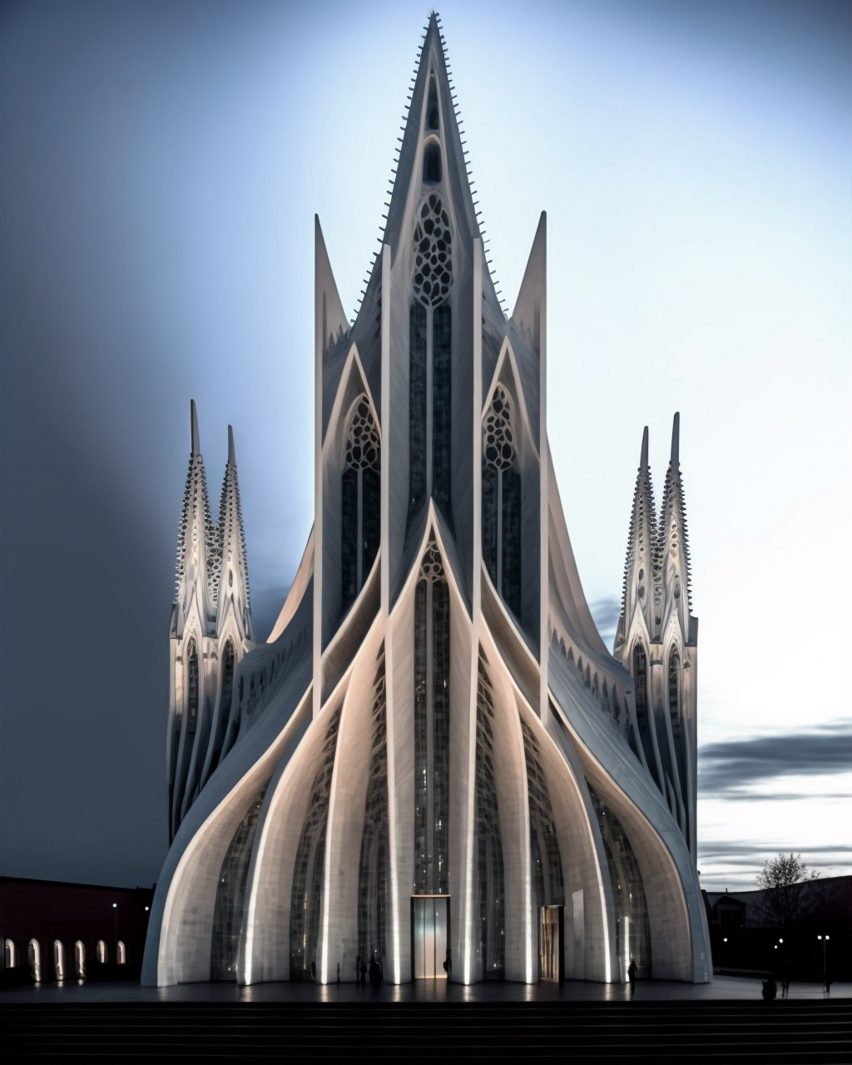
The project saw Fu generate a series of column capitals using AI image generator Midjourney that were then hand-carved in stone by Apfel. It is an example of how AI can combine different concepts, according to Fu, who thinks this is AI's main strength.
"AI's best ability is to fuse things," Fu told Dezeen. "So if you take two distinct concepts that are very recognisable and you fuse them, that hybridism would give you this very successful and unique result that is also novel."

This could be especially interesting when it comes to architecture, according to the designer.
"The ability to fuse classical architecture and futuristic architecture could be like neo-classical futurism, new fusions that never existed," he said. "It's what I call hybridism, which is a very unique concept."
By using AI design tools, Fu believes that architects could create modern buildings that hark back to more classical designs.
"I hope to usher in more ornamentation and move away from the minimalism that was ushered in by the industrial revolution," he explained.
"The industrial revolution was about human ideation and machine fabrication," he added.
"Finally, AI allowed us to put the machine at the ideation phase, so that potentially we can use human fabrication instead and revert the role of the two."
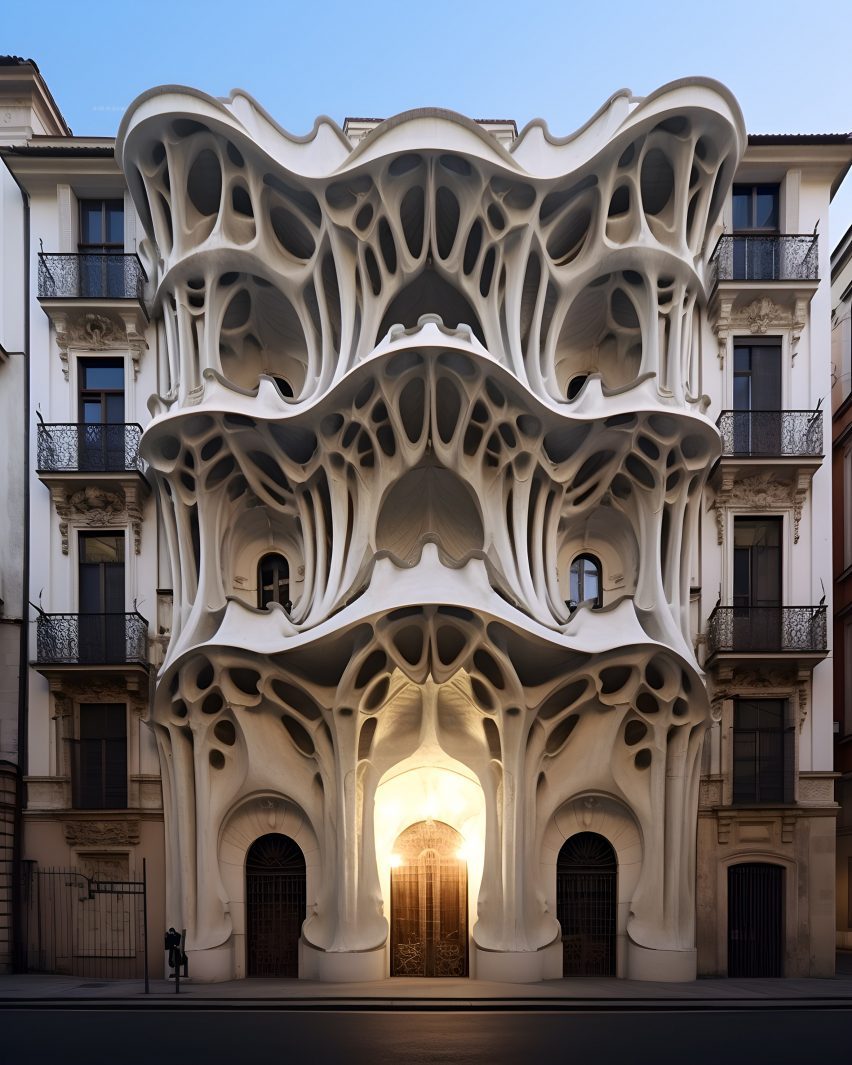
The hand-carved stone project is an example of this, according to Fu.
"We're flipping the narrative – it's now machine ideation and human fabrication. And that can potentially usher in a new sort of design narrative that has never been thoroughly explored," he said.
Much of the criticism against AI has focused on this idea that the creative control would be held by a machine, leaving humans to do the physical work. But Fu doesn't see this as a negative, arguing that human handicraft cannot be replaced.
"Handicraft such as carving stone is very human and it's also millennia of human knowledge," he said.
"It's well-respected as a profession and machines to this day cannot carve anything better than a human hand."
He believes that letting AI do the designs would free architects and designers up to create more innovative ornamental buildings.
"We love Renaissance cathedrals so much, yet we're building boxes everywhere," Fu said.
"So why not bring back ornamentation, bring back the beauty and the aesthetics that we once held so highly in the classical era, and also allow machines to continue to fabricate and produce feasibly for us and free us up to do the more intricate and beautiful parts?" he added.
"It is what we do with parametricism as well; we're celebrating maximalism and trying to bring back these essential beauties that we see in old architecture."
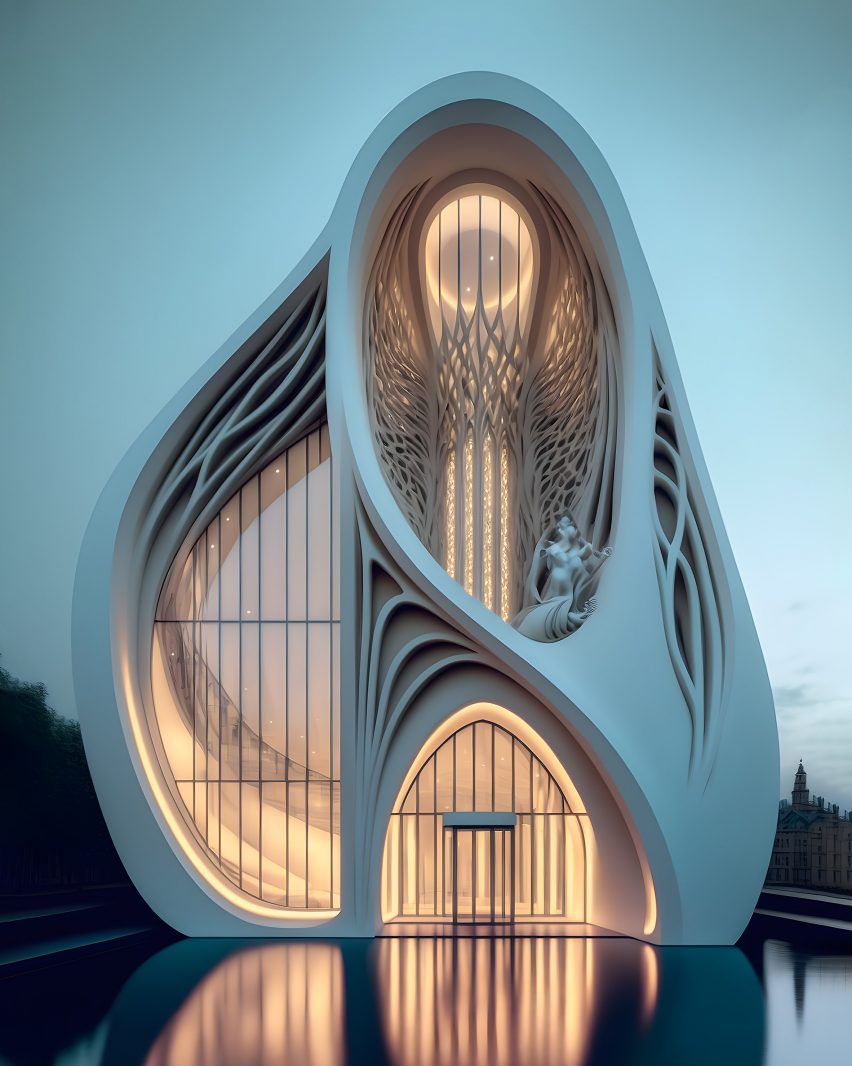
Fu thinks of the hybridist AI style as "neoclassical futurism" and has written a manifesto on the concept.
"AI, under the thoughtful control of the designer, can elevate classical styles into contemporary contexts, giving rise to what I believe to be the unique style to be described as neoclassical futurism," the manifesto states.
"This style holds the promise to flourish in the coming days as AI becomes more prominently used in design."
"Through AI and the emergence of neoclassical futurism, we potentially stand on the brink of a new era of architectural innovation, where the past and future converge in exciting and unanticipated ways."
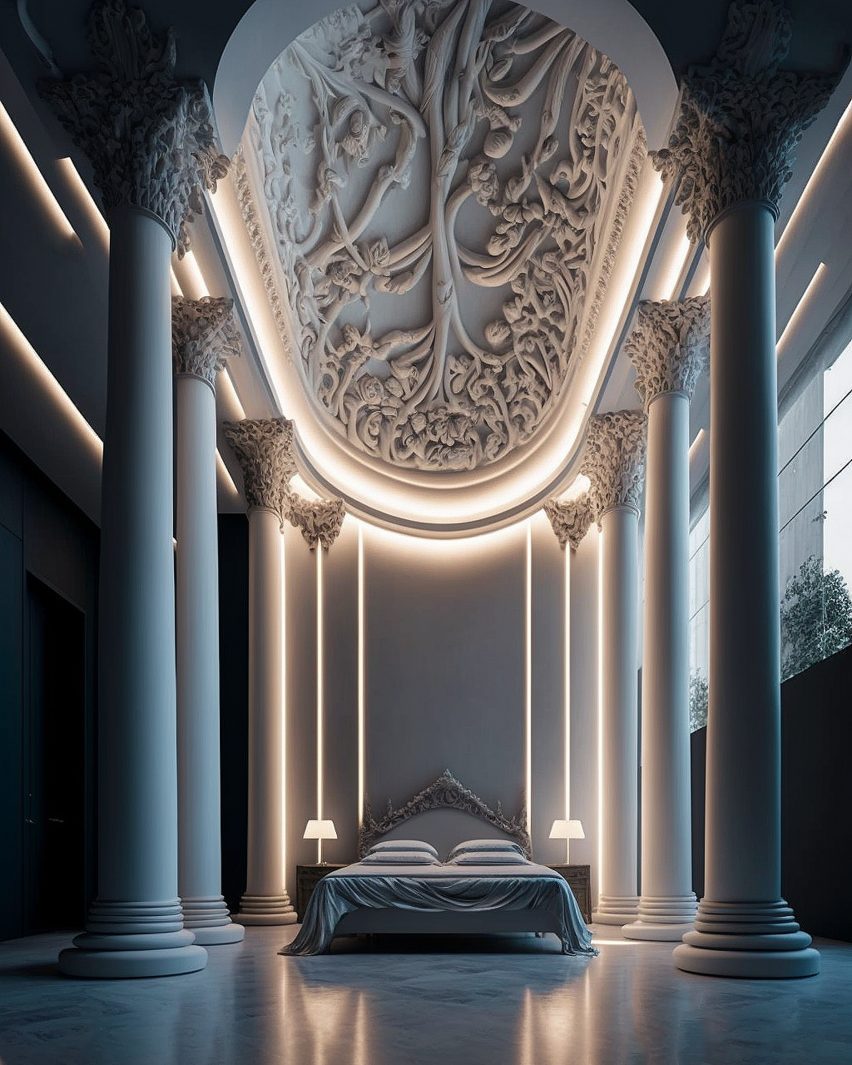
The designer recently used the AI tool LookX to turn crumpled paper into buildings that look like they were designed by starchitects including Frank Gehry.
LookX was first founded in China as XKool by Wanyu He before the English-language version of the platform was launched, and Fu believes that China could eventually become a world leader in AI tools.
"China has huge amounts of resource," he said. "So it's one of the few instances I think, like TikTok, where a Chinese company can actually take monopoly over something."
"I think China is an interesting case when it comes to their economy and their growth," Fu said.
"They don't get enough credit by the media, but really they're starting to become a hub of innovation, surprisingly," he added. "My opinion of China used to be negative, but it has proven itself to really, really stand up in the innovation sector."
"They are booming in the tech industry of their own and innovation, so it's not surprising to see them trying to not only come up to par but compete and replace things like Midjourney with their own version, which in my experience right now is superior."
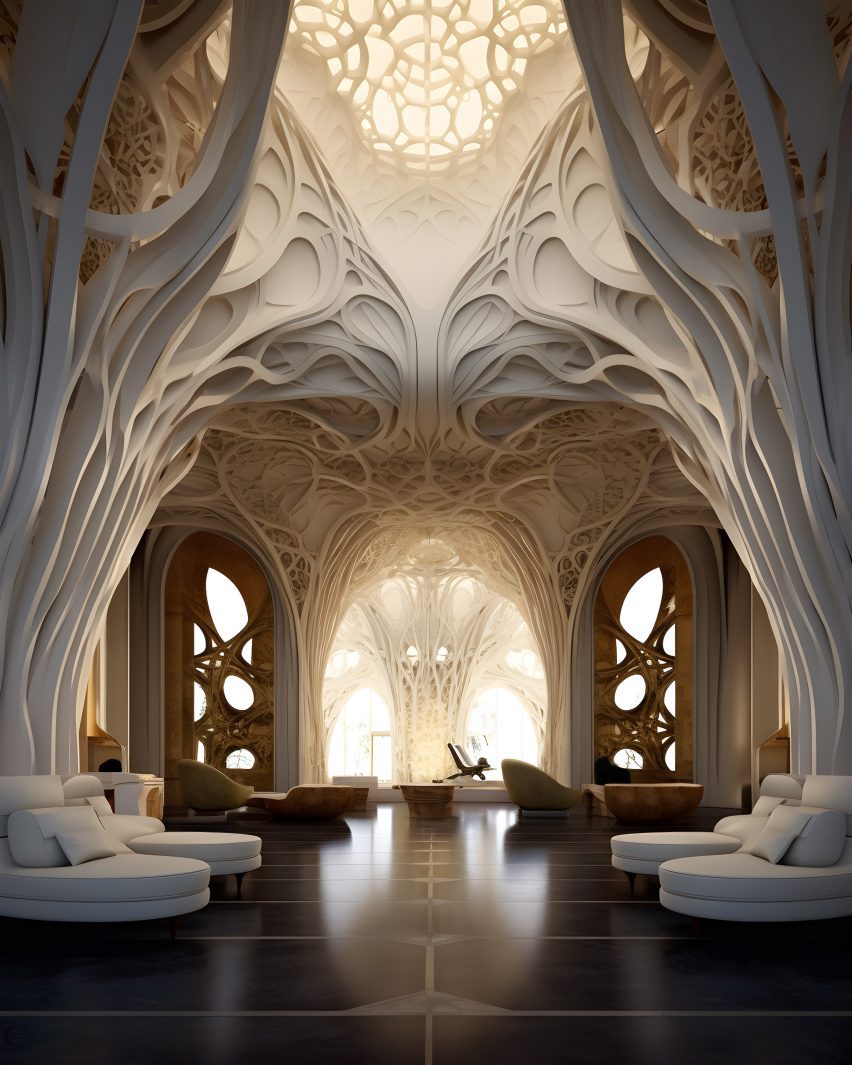
Eventually, AI will become an "everyday tool of necessity," Fu believes.
"There's an overarching concern with all of AI development with the public with regards to AI replacing us," he said.
"And I would always allude to historical precedence, like with any technology that has come – it will obviously replace certain elements of our task, but at the same time, it will transform our industry and where we focus," he added.
"Our human input will be reallocated, as opposed to being replaced."
The images are courtesy of Tim Fu.
Dezeen In Depth
If you enjoy reading Dezeen's interviews, opinions and features, subscribe to Dezeen In Depth. Sent on the last Friday of each month, this newsletter provides a single place to read about the design and architecture stories behind the headlines.

AItopia
This article is part of Dezeen's AItopia series, which explores the impact of artificial intelligence (AI) on design, architecture and humanity, both now and in the future.